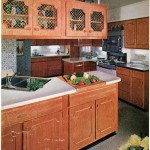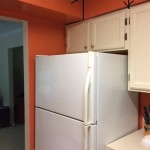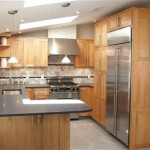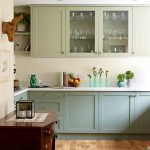How To Install Self-Closing Hinges On Kitchen Cabinets
Upgrading your kitchen cabinets with self-closing hinges can elevate both functionality and aesthetics. The smooth, silent closing action adds a touch of elegance, and the convenience of a self-closing mechanism eliminates the need for manual slamming. Installing these hinges is a straightforward task that can be accomplished with basic tools and a few steps. This guide will walk you through the process, equipping you with the necessary knowledge and confidence to transform your kitchen cabinets.
1. Gather Necessary Tools and Materials
Before embarking on the installation process, ensure you have all the necessary tools and materials readily available. This will streamline the task and prevent any delays. Here's a comprehensive list:
- Self-closing hinges
- Screwdriver or drill
- Phillips screwdriver bit
- Level
- Pencil
- Tape measure
- Safety glasses
- Optional: Wood filler, wood stain or paint
The type of screwdriver you choose will depend on the size and type of screws provided with the hinges. Ensure that the screwdriver bit is the appropriate size and type to prevent stripping the screw heads.
2. Remove Old Hinges and Prepare the Cabinet Door
The first step involves removing the existing hinges from the cabinet door. This process is relatively simple, but it requires care to avoid damaging the door or cabinet. Here's how to proceed:
- Using a screwdriver, carefully remove the screws holding the hinges to the cabinet door and cabinet frame.
- Once the screws are removed, gently lift the door away from the cabinet frame. Be cautious not to force the door, as this could cause damage.
- Inspect the door and cabinet frame for any existing screw holes. If necessary, use wood filler to fill these holes and smooth the surface. Allow the filler to dry completely before proceeding.
You may need to sand the filled holes to achieve a smooth finish. This step is optional, but it ensures a professional and aesthetically pleasing result.
3. Position the New Hinges
Now that the old hinges are removed and the surface is prepped, it's time to position the new self-closing hinges. This is a crucial step as it determines the alignment and functionality of the door. Here's how to proceed:
- Hold the new hinge against the cabinet door at the desired location. Ensure the hinge is level and flush with the edge of the door. Mark the screw hole positions with a pencil.
- Repeat the process for the second hinge on the door. Make sure both hinges are aligned and equidistant from the top and bottom edges of the door.
- Now, hold the hinge against the cabinet frame at the desired location. Ensure the hinge is level and flush with the edge of the frame. Mark the screw hole positions with a pencil.
- Repeat the process for the second hinge on the cabinet frame. Make sure both hinges are aligned and equidistant from the top and bottom edges of the frame.
It's important to ensure that both the door and frame holes align perfectly. This will prevent the door from sticking or misaligning when closed.
4. Attach the Hinges to the Cabinet Door and Frame
With the hinge positions marked, it's time to attach the hinges to both the door and the cabinet frame. This step requires precision and care to ensure a secure and functional installation. Follow these steps:
- Using the screws provided with the hinges, attach the hinges to the cabinet door at the marked positions. Ensure the screws are driven in straight and tight, but avoid overtightening, which could damage the door.
- Repeat the process for the second hinge on the door.
- Attach the hinges to the cabinet frame at the marked positions. Again, ensure the screws are driven in straight and tight but avoid overtightening.
- Repeat the process for the second hinge on the frame.
- Once all the hinges are attached, carefully reattach the cabinet door to the frame. Make sure the door closes smoothly and aligns properly with the cabinet frame.
If the door doesn't close smoothly, adjust the hinge placement slightly. This may involve loosening the screws and repositioning the hinges. Once the door closes smoothly and without any gaps, tighten the screws to secure the hinges in place.

Replacing Cabinet Hinges With Overlay Self Closing The Palette Muse

How To Add Soft Close Any Cabinet Porch Daydreamer

How To Adjust Self Closing Kitchen Cabinet Hinges Maintenance

How To Install Soft Close Hinges In Cabinets

Benefits Of Soft Close Self Closing Hinges For Your Kitchen

Soft Close Hinge Stopped Working Here S How To Fix It Doorsome

110 Degree 35 Mm Full Overlay Soft Close Face Frame Cabinet Hinges With Installation S 1 Pair 2259 Ff The Home Depot

Titus Soft Close 165 Wide Angle Cabinet Hinge Pair Of 2 Diy At B Q

110 Degree 35 Mm Half Overlay Soft Close Frameless Cabinet Hinges With Installation S 1 Pair 2258 The Home Depot

Cabinet Door Hinges Self Closing Soft Close Rejs Ltd








